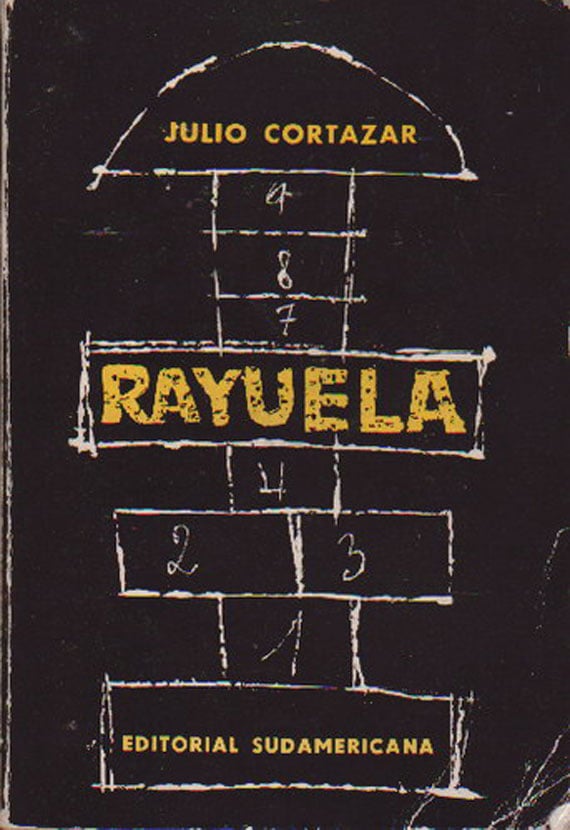
- Hopscotch
- Published by: Editorial Sudamericana
- Level: Advanced
- First Published in: 1963
Horacio Oliveira, an Argentine expat living in France, hangs out with a group of bohemian intellectuals and maintains a rocky relationship with his Uruguayan girlfriend, La Maga. But this synopsis is only one way to read the plot. A classic of 60s world literature, Hopscotch encourages readers to hop from chapter to chapter, following different orders and patterns, some of them suggested by the author himself and others open to the readers' whims.

"Rayuela," or "hopscotch," is a popular children’s game in which participants hop on numbered rectangles, avoiding the space that holds a marker or stone which participants must grab on their way to the end, a half-circle often identified as “heaven.” It is also the title of one of the greatest Spanish-language novels of all time, written by famous Argentine author Julio Cortázar. Although he wrote Rayuela in Paris and published it first in Spain in 1963 – making 2013 the book's 50th anniversary – it is considered to be a landmark of South American literature.
"One of the greatest Spanish-language novels of all time"
It is not an ordinary book. Rayuela is divided into three parts, which can be read in multiple ways: chapter by chapter, from beginning to end; all the way until the conclusion of the second part, but ignoring the third; or non-linearly, starting on chapter 73 and then hopping and skipping around, following the suggestions given by the author. The first part is called “From the other side” and it tells the story of Horacio Oliveira, an Argentine intellectual living in Paris, and his complicated relationship with La Maga (or The Magician) and her child. Many long and intelligent discussions fill their day, as they spend time with a group of foreign artists living in Paris, who make up the Snake Club. The second part is called “From this side,” and it shows Oliveira returning to Buenos Aires and meeting up with his old friend Manolo Traveler and his wife Talita. Finally, the third part, “From everywhere,” is the most unique. The chapters in it are full of reflections, poems, and thoughts that, at first glance, have no strict connection to the rest of the book, but do have meaning if readers choose to read the novel as Cortázar recommends.

Because of the book’s peculiarity, Rayuela courted controversy when it appeared 50 years ago. Cortázar defined it, at the beginning, as an “anti novel,” but afterwards decided that it was, in fact, a “contra novel,” in which readers occupy an active role. Also, Cortázar creates within the book a new language called “glíglico.” In the beginning, it seems like a kind of game between La Maga and Oliveira, but it is then employed by the author in a chapter-length erotic scene. This hot encounter, completely told in “glíglico,” will make the reader exercise his or her imagination to the extreme.
"Cortázar defined Hopscotch, at the beginning, as an “anti novel,” but afterwards decided that it was, in fact, a “contra novel,” in which readers occupy an active role."
Cortázar was born in 1914, in Belgium, where his father worked for the Argentine embassy. He then travelled to Argentina in 1918, where he later worked as a literature professor in several cities and as a translator. His first novel, Divertimento, was published in 1950. Opposed to the government of then president Juan Domingo Perón, he moved to France in the early 50s, where he lived until 1984. He married twice and died in Paris of leukemia.

